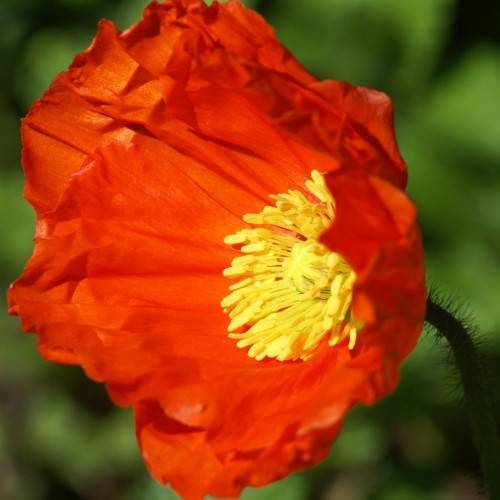
Icelandic poppy
Papaver nudicaule 'Champagne Bubbles Orange'
Cycle:
Perennial
Watering:
Average
Hardiness Zone:
4 - 8
Flowers:
Flowers
Sun:
Full sun
Leaf:
Yes
Growth Rate:
Low
Maintenance:
Moderate
Drought Tolerant:
Yes
Care Level:
Medium
watering
Icelandic poppies should be watered once a week, waiting until the soil just barely begins to feel dry to the touch before adding water. This should usually be around 1/2 to 1 inch (1 to 2.5 cm) of water per week, depending on the weather conditions and the size of the pot the plant is in. The amount of water should also be reduced during the winter months when the plants are dormant. Using a watering can with a sprinkler head will help distribute the water more evenly on the soil surface. Icelandic poppies are not tolerant of soggy soil, so make sure to empty any draining saucers of excess water after a few minutes.
sunlight
Icelandic poppy (Papaver nudicaule 'Champagne Bubbles Orange') should receive plenty of sunlight throughout the day for optimal growth and health. The best location for these plants is in full sun, meaning at least 6 hours of sun per day. While some shade is tolerated, Icelandic poppies produce more flowers and generally look healthier when they receive high amounts of sunlight. If you live in an area that receives mostly full sun, it is best to locate your Icelandic poppies in a south or west-facing location, as this will help them receive the most sunlight possible.
pruning
Icelandic poppies (Papaver nudicaule 'Champagne Bubbles Orange') are best pruned to encourage flowering and keep them looking tidy. Pruning should be done towards the end of winter, when the plant is still dormant. Lightly pinch off any spent, or dead flowers and remove any old flower stalks. This encourages fresh buds to come through and can regenerate older, neglected plants. Remove any diseased or damaged stems, and thin overcrowded clumps for a more airy look. It is important not to prune too heavily, as it can reduce flowering for that season.
